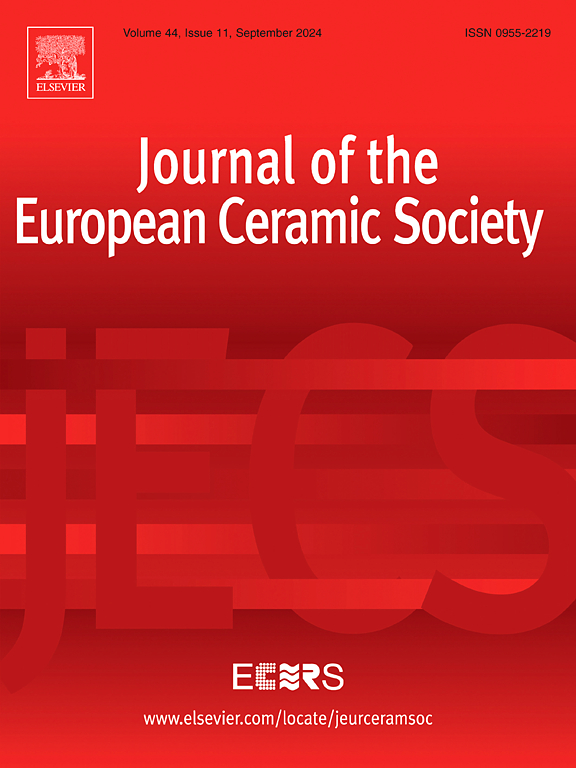Strategy for optimizing piezoelectric properties of (1−x)Pb(In1/2Nb1/2)O3−0.05Pb(Mg1/3Nb2/3)O3−xPbTiO3 ceramics for medical applications
IF 5.8
2区 材料科学
Q1 MATERIALS SCIENCE, CERAMICS
Journal of The European Ceramic Society
Pub Date : 2025-01-29
DOI:10.1016/j.jeurceramsoc.2025.117242
引用次数: 0
Abstract
Enhanced temperature stability and dielectric permittivity of piezoelectric materials are desirable for ultrasound-based transducer applications because the self-heating of devices during operation degrades piezoelectric properties and electrical impedance mismatching limits power transfer. To address these issues, (1−x)Pb(In1/2Nb1/2)O3−0.05Pb(Mg1/3Nb2/3)O3−xPbTiO3 ceramics near the morphotropic phase boundary were synthesized using solid-state reaction method. These compositions exhibited mixed rhombohedral and tetragonal perovskite structures, and the tetragonal phase fraction increased with increasing x. The εr of the rhombohedral phase decreased, while that of the tetragonal phase increased after application of an AC electric field, and the tetragonal phase contributed more to d33 than the rhombohedral phase. The rhombohedral phase gradually depolarized with increasing annealing temperature. The εr can be enhanced by utilizing the advantage of the depolarized rhombohedral phase without significantly sacrificing piezoelectric properties. This method has potential as a strategy to alleviate electrical impedance mismatching, enhancing the imaging performance of transducers for ultrasound-based medical diagnosis.
求助全文
约1分钟内获得全文
求助全文
来源期刊

Journal of The European Ceramic Society
工程技术-材料科学:硅酸盐
CiteScore
10.70
自引率
12.30%
发文量
863
审稿时长
35 days
期刊介绍:
The Journal of the European Ceramic Society publishes the results of original research and reviews relating to ceramic materials. Papers of either an experimental or theoretical character will be welcomed on a fully international basis. The emphasis is on novel generic science concerning the relationships between processing, microstructure and properties of polycrystalline ceramics consolidated at high temperature. Papers may relate to any of the conventional categories of ceramic: structural, functional, traditional or composite. The central objective is to sustain a high standard of research quality by means of appropriate reviewing procedures.
 求助内容:
求助内容: 应助结果提醒方式:
应助结果提醒方式:


